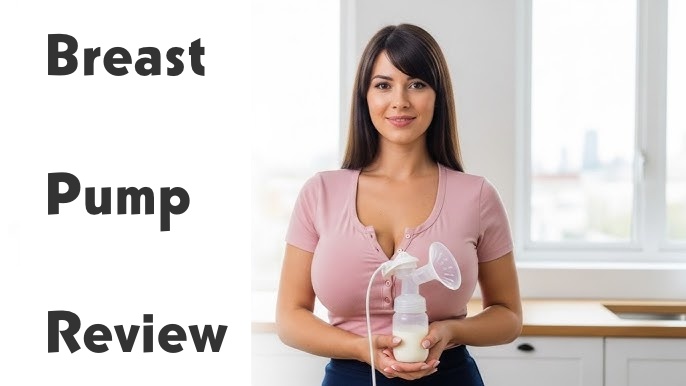Do Small Breasts Mean Low Milk Supply?

Are you worried that your smaller breasts might not produce enough milk for your baby? Many mothers share this concern, but breast size has no connection to your ability to nourish your child. Just as women’s bodies come in different shapes and sizes, breasts vary naturally in their appearance – yet nearly all mothers can produce the milk their babies need. The amount of milk you make depends on factors like how often you nurse and how well your baby latches, not on whether your breasts are small or large.
How Milk Production Actually Works
| Topic | Explanation |
|---|---|
| Milk Production System | The body produces milk through a biological system that responds to the baby’s needs. It relies on specialized glands, hormones, and the principle of supply and demand. |
| Milk Glands (Alveoli) | Alveoli are tiny grape-like clusters in the breasts that produce milk. They convert nutrients from the bloodstream into breast milk. These glands are located behind the nipples and areolas, supported by surrounding tissue. |
| Hormones: Prolactin & Oxytocin | Prolactin stimulates milk production, while oxytocin triggers milk release. When the baby nurses, nerve signals from the nipple prompt the brain to release these hormones, sustaining the cycle. |
| Supply and Demand | Milk production works on a feedback loop: the more milk the baby removes, the more the body produces. Frequent nursing signals the body to maintain the right milk level. |
| Milk Storage & Continuous Production | Milk is stored between feedings in ducts. During nursing, new milk moves into these ducts while the baby feeds. Milk is produced continuously, day and night, depending on nursing frequency and effectiveness—not on duct size. |
Do Small Breasts Mean Low Milk Supply?
Breast size has no bearing on your ability to breastfeed. The amount of milk you can produce depends on how often and how effectively your baby nurses, not on your breast size.
Fat Content Determines Breast Size
Breast size mainly reflects the amount of fat tissue present, not the amount of milk-making tissue (alveoli). While larger breasts contain more fat tissue, they don’t necessarily have more milk-producing structures than smaller breasts.
Storage Capacity Varies
Smaller breasts may store less milk at once compared to larger breasts – like having a smaller container. This doesn’t affect total milk production but may mean more frequent feeding sessions. Some mothers find they need to nurse or use their breast pump more frequently, but your body continues making milk as long as milk is removed effectively.
Proper Latch Matters More Than Size
A good latch proves far more important for milk production than breast size. When your baby latches properly, they empty the breast effectively, which signals your body to produce more milk.
This stimulation-production cycle maintains your milk supply over time.
Signs Your Baby Is Getting Enough Milk
| Sign | Details |
|---|---|
| Weight Gain | Baby should regain birth weight by 2 weeks and then gain 5–7 ounces (150–210 g) per week. Progress is monitored through pediatrician checkups. Baby’s body should fill out with firm, healthy skin. |
| Wet & Dirty Diapers | By day 5: 6–8 wet diapers daily, urine pale or clear. In the first month: 3–4 soft, yellow stools daily. After 4–6 weeks: bowel movements may be less frequent but still soft and substantial. |
| Nursing Frequency | Baby should nurse 8–12 times in 24 hours during early months. Signs of effective feeding include rhythmic swallowing, jaw movements reaching the ear, and baby seeming satisfied after feeds. |
| Behavior Between Feeds | A well-fed baby is alert when awake, has good muscle tone, healthy skin, and steadily outgrows clothes. Baby appears content after most feeds, though cluster feeding is normal. |
| Breast Changes | Breasts feel fuller before feeds and softer afterward. Milk may drip or spray during letdown, and mild cramping may occur as milk is released. Applies to both nursing and pumping. |
Factors That Really Impact Milk Supply
Your milk supply responds to many factors within your control, and some that require medical attention.
Understanding these key influences helps you maintain healthy milk production.
Frequent and Effective Nursing
Your baby needs to nurse 8-12 times daily in the first months. Missing feeds or poor latching can reduce milk production. If you need to be away from your baby, using a breast pump helps maintain this frequency. A proper latch shows your baby’s lips flanged out, chin touching the breast, and rhythmic swallowing during feeds. Consistent nursing keeps your milk supply steady and meets your baby’s growing needs.
Balanced Nutrition and Hydration
A nursing mother needs an extra 400-500 calories daily and should drink when thirsty.
While specific foods don’t increase milk supply, severe calorie restriction or dehydration can reduce it.
Regular meals and adequate water support consistent milk production.
Your body prioritizes milk production, but good nutrition helps maintain your own health while nursing.
Sleep Deprivation and High Stress
Extreme fatigue and chronic stress may lower prolactin levels – the key milk-making hormone. Taking short naps when your baby sleeps and finding ways to reduce stress help maintain milk supply. Physical exhaustion can also affect letdown and feeding frequency. While some stress is normal, prolonged high stress levels can interfere with milk production.
Trust Your Body’s Milk-Making Ability!
Your breast size doesn’t affect your ability to feed your baby. Your body makes milk based on how often and how well your baby nurses. Keep track of your baby’s weight gain, wet diapers, and feeding patterns to know they’re getting enough milk. Nurse often, maintain your health, and talk to your doctor about any concerns. Remember that lactation consultants are there to help you succeed in breastfeeding.
